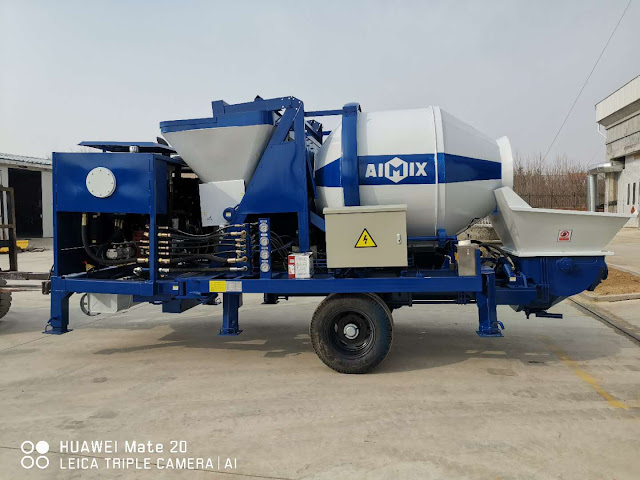Self-Loading Concrete Mixer Cost: A Glance at Its Cost-effectiveness
Self-loading concrete mixers have gained popularity in the construction industry for their versatility and cost-effectiveness. With their unique design that combines loading, mixing, and transportation into one machine, they offer a one-stop solution for concrete production directly on construction sites. Despite their benefits, some construction professionals still question whether they are more cost-effective than traditional mixers. Let’s explore the key factors that determine the cost-effectiveness of self-loading concrete mixers.
Key Factors Affecting Cost-Effectiveness
The cost-effectiveness of self-loading concrete mixers(rentabilidad de las hormigoneras autocargables) depends on several factors:
1. Type of Construction Project
Different construction projects have varying needs. For example, residential projects often require less concrete than large commercial or infrastructure projects. As a result, the size and nature of the project heavily influence whether a self-loading mixer is the most cost-effective option.
2. Project Size and Duration
The length and size of a project play a significant role in determining the mixer’s cost-effectiveness. Larger and longer projects typically benefit more from self-loading mixers because they reduce labor costs and boost efficiency over time.
3. Availability of Raw Materials
When raw materials, such as aggregates and cement, are readily available on-site or nearby, a self-loading concrete mixer can immediately load and mix these materials, speeding up the production process and cutting down on waiting times. This reduces transportation costs and enhances overall cost-effectiveness.
4. Labor and Maintenance Costs
Self-loading mixers can help reduce labor costs since they require fewer operators. Additionally, maintenance costs are lower for newer, high-quality models, which tend to have fewer breakdowns. This can offset the higher upfront cost of purchasing the machine.
Traditional vs. Self-loading Concrete Mixers
1. Labor Efficiency
Traditional concrete mixers(venta de autohormigoneras) require more manual labor for loading, mixing, and sometimes transporting the concrete. In contrast, self-loading mixers autonomously perform these functions, significantly reducing the need for manual labor. This increases productivity, especially in large-scale projects where concrete demand is high.
2. Initial Cost vs Long-term Savings
While traditional mixers tend to be cheaper upfront, they often come with higher labor and maintenance costs over the lifespan of the project. Self-loading mixers, on the other hand, have a higher initial investment but offer long-term savings by reducing labor, improving operational efficiency, and minimizing maintenance-related downtime.
Pros of Self-loading Mixers:
- Reduced labor costs.
- Increased productivity through automation.
- Fewer maintenance requirements over time.
Cons of Self-loading Mixers:
- Higher initial cost.
- Might not be ideal for very small projects.
Cost-effectiveness in Different Construction Sectors
1. Residential Construction
In residential construction, the cost-effectiveness of self-loading mixers depends on the project’s size and concrete demand. For smaller projects, traditional mixers might suffice, but in larger residential developments or neighborhoods, self-loading mixers save time and labor, making them a more cost-effective choice in the long run.
2. Commercial Construction
Commercial projects, such as office buildings or industrial complexes, benefit significantly from self-loading mixers due to the high concrete demand. By autonomously loading, mixing, and transporting concrete on-site, these mixers cut down on labor and delivery costs, resulting in significant savings over the project’s duration.
3. Infrastructure Development
For large-scale infrastructure projects, such as bridges, tunnels, and airports, self-loading concrete mixers are highly cost-effective. These projects often require large quantities of concrete, and having the ability to mix and transport concrete directly on-site reduces the need for multiple concrete deliveries, saving both time and money.
4. Mining and Quarrying Operations
In mining and quarrying, self-loading mixers provide a flexible solution for mixing concrete in remote or hard-to-access areas. The mixers reduce reliance on external concrete suppliers, which is particularly useful in isolated locations. This efficiency can lead to significant cost savings.
5. Road Construction
For road-building projects, self-loading concrete mixers offer substantial savings by reducing the need for manual labor and increasing production speed. The ability to mix concrete directly at the road construction site also minimizes transportation costs, making these mixers a more economical option for lengthy or remote road construction projects.
Benefits of Self-loading Concrete Mixers in the Construction Industry
- Labor Savings: Self-loading mixers require fewer operators, allowing construction companies to reduce labor costs.
- Increased Productivity: By automating the loading, mixing, and transportation processes, these mixers significantly boost productivity, especially on larger construction sites.
- Lower Maintenance: High-quality self-loading mixers are designed for long-term use, with reduced breakdowns and fewer maintenance requirements compared to traditional models.
- On-Site Flexibility: Self-loading mixers can produce concrete directly on-site, eliminating the need for frequent concrete deliveries, particularly beneficial for remote construction projects.
Conclusion
Self-loading concrete mixers offer cost savings in various construction sectors, including residential, commercial, infrastructure, and road construction. While they may have a higher initial cost compared to traditional mixers, their long-term savings in labor, maintenance, and operational efficiency make them a more cost-effective solution in most cases. Whether your project is small or large, the ability to load, mix, and transport concrete autonomously can enhance productivity and reduce costs, making self-loading concrete mixers a valuable investment for many construction professionals.




Comments
Post a Comment